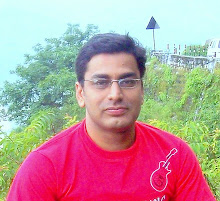What Should I Do With My Life?
Friday, July 25, 2008
 The real meaning of success -- and how to find it.
The real meaning of success -- and how to find it.
We're seduced by the idea that picking up the pieces and simply tweaking the formula will get the party started again. In spite of our best thinking and most searing experience, our ideas about growth and success are mired in a boom-bust mentality. Just as LBOs gave way to IPOs, the market is primed for the next engine of wealth creation. Just as we traded in the pinstripes and monster bonuses of the Wall Street era for T-shirts and a piece of the action during the startup revolution, we're waiting to latch on to the new trappings of success. (I understand the inclination. I've surfed from one boom to the next for most of my working life -- from my early days as a bond trader to my most recent career as a writer tracking the migration of my generation from Wall Street to Silicon Valley.)
There's a way out. Instead of focusing on what's next , let's get back to what's first . The previous era of business was defined by the question, Where's the opportunity? I'm convinced that business success in the future starts with the question, What should I do with my life? Yes, that's right. The most obvious and universal question on our plates as human beings is the most urgent and pragmatic approach to sustainable success in our organizations. People don't succeed by migrating to a "hot" industry (one word: dotcom) or by adopting a particular career-guiding mantra (remember "horizontal careers"?). They thrive by focusing on the question of who they really are -- and connecting that to work that they truly love (and, in so doing, unleashing a productive and creative power that they never imagined). Companies don't grow because they represent a particular sector or adopt the latest management approach. They win because they engage the hearts and minds of individuals who are dedicated to answering that life question.
This is not a new idea. But it may be the most powerfully pressing one ever to be disrespected by the corporate world. There are far too many smart, educated, talented people operating at quarter speed, unsure of their place in the world, contributing far too little to the productive engine of modern civilization. There are far too many people who look like they have their act together but have yet to make an impact. You know who you are. It comes down to a simple gut check: You either love what you do or you don't.
Those who are lit by that passion are the object of envy among their peers and the subject of intense curiosity. They are the source of good ideas. They make the extra effort. They demonstrate the commitment. They are the ones who, day by day, will rescue this drifting ship. And they will be rewarded. With money, sure, and responsibility, undoubtedly. But with something even better too: the kind of satisfaction that comes with knowing your place in the world. We are sitting on a huge potential boom in productivity -- if we could just get the square pegs out of the round holes.






 in also defied his party whip. Another alliance constituent, NPF, could do little to prevent its lone MP Wangyuh Konyak from supporting the trust vote. The Akali Dal also was unable to prevent Sukhdev Singh Libra from abstaining. TDP saw one MP, M Jagannath voting for the government and another, D K Audikesavulu, abstaining. UPA had already sewn up TRS’s A Narendra who voted for it despite his party whip. That was true also of two MDMK members, L Ganesan and Gingee Ramachandran, as well as NLP’s Baleshwar Yadav.
in also defied his party whip. Another alliance constituent, NPF, could do little to prevent its lone MP Wangyuh Konyak from supporting the trust vote. The Akali Dal also was unable to prevent Sukhdev Singh Libra from abstaining. TDP saw one MP, M Jagannath voting for the government and another, D K Audikesavulu, abstaining. UPA had already sewn up TRS’s A Narendra who voted for it despite his party whip. That was true also of two MDMK members, L Ganesan and Gingee Ramachandran, as well as NLP’s Baleshwar Yadav. 


















